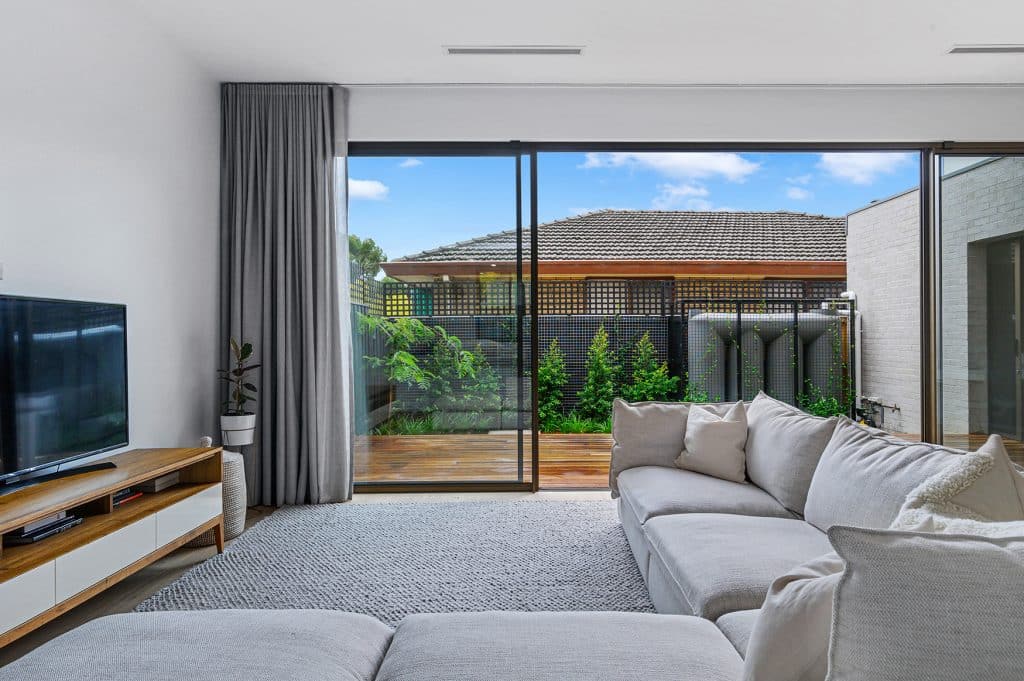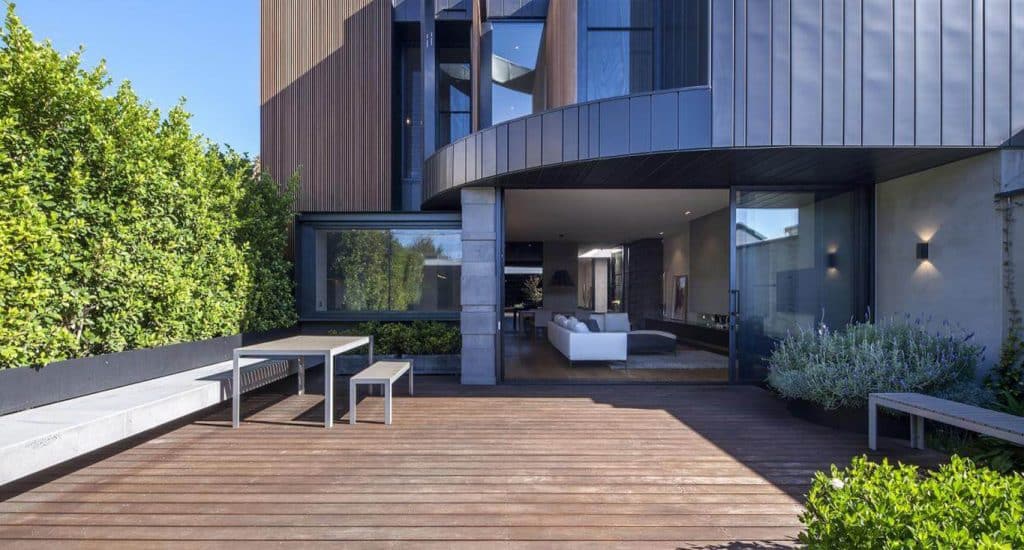How Much Does Secondary Glazing Cost? Full Price Breakdown
If you’re wondering how much secondary glazing costs in Australia, the answer typically ranges from $300 to $650 per square metre, depending on the system you choose and your specific home requirements. DIY kits can start from as little as $180 per square metre. However, actual costs depend on factors like door and window size, system type, glass type, and installation complexity.
Tired of noisy neighbours and sleepless nights? Secondary glazing windows and doors is a cost-effective alternative to double glazing that transforms your existing glass windows and doors into high-performance units. It helps reduce noise by up to 80%, lowers energy bills, and improves thermal insulation—all without replacing your current door and window frames.
Below is the comprehensive guide to pricing, helping homeowners plan their project accurately and avoid budget surprises.
7 Key Factors That Affect Secondary Glazing Prices
Installing secondary glazing on your windows and doors isn’t a one-size-fits-all project. Here are the main drivers when it comes to price:
1. Type of Secondary Glazing System
- Magnetic secondary glazing
- Aluminium framed hinged units
- Sliding or lift-out panels
- Fixed acrylic sheet solutions
Professional systems using aluminium frames and sealed acrylic or glass panels will cost more than magnetic DIY systems but deliver superior insulation and noise reduction.
2. Size of Your Windows
Larger panes require more materials and fitting time, increasing the price. A complex or non-standard window size often needs custom systems, raising prices further.
3. Fixed vs. Openable Systems
Fixed secondary acrylic or glass panels are the most affordable option. If you require hinged, sliding, double sliding, or removable panels for regular window or door access, expect to pay more for products and professional fitting.
4. Installation Method
Opting for a professional installation service ensures accuracy and long-term performance but increases your upfront investment compared to DIY solutions.
5. Material Choice
High-grade acrylic panels are lighter and cheaper than toughened glass while delivering comparable acoustic and thermal insulation performance. Timber-framed systems suit heritage properties but typically fetch more than aluminium.
6. Window Condition and Type
Retrofitting onto older or irregular windows and doors often demands custom solutions. Sash windows, French doors, and sliding windows require more complex installation methods than standard fixed acrylic or glass panels.
7. Property Location and Access
Homes in rural locations or with difficult access may incur higher labour and transport costs from suppliers and installation teams.
Secondary Glazing Cost Guide: Price by Type, Size & Room
Understanding the typical costs by system, size, door and window type can help you budget more effectively.
Price Guide by System Type
Secondary Glazing Type | Price Range (per m²) |
DIY Acrylic Sheet Kits | $180 – $300 |
Magnetic Panel Systems | $250 – $400 |
Aluminium Framed Systems | $350 – $650 |
Timber Framed Systems | $450 – $700 |
Price Guide by Window Type
Window Type | Price Range (per m²) |
Fixed | $300 – $500 |
Hinged / Casement | $350 – $600 |
Sliding | $350 – $600 |
Double-Hung (Sash) | $400 – $650 |
Large Feature | $500 – $700 |
Price Guide by Room
Room Type | Estimated Total Cost |
Single Bedroom | $1,000 – $2,500 |
Lounge/Living Area | $2,500 – $4,500 |
Whole Home | $8,000 – $15,000 |
Remember that the total project cost will vary depending on the number of windows and doors, and their complexity. Always request a tailored quote to understand your exact investment.
Is Secondary Glazing Cheaper than Double Glazing? Price Comparison
Secondary glazing is considerably more affordable than full replacement double glazing. While the typical price of secondary glazing ranges between $300 and $650 per square metre, replacing your existing windows and doors with double glazed products can range from $800 to over $1,200 per square metre, depending on frame materials and complexity.
Solution | Typical Cost (per m²) | Window Replacement Required? |
Secondary Glazing | $300 – $650 | No |
Double Glazed Units | $800 – $1,200+ | Yes |
Additionally, installing secondary glazing avoids the extensive disruptions involved in removing your original door or window frames. You won’t need to replaster walls or repaint interiors, as secondary glazing systems fit onto your existing door or window frame.
For heritage homes or properties where replacing windows and doors is restricted, secondary glazing remains the most practical solution.
Is Secondary Glazing Worth It? Honest Pros & Cons
If you’re weighing up whether secondary glazing is a good investment for your home, consider the following:
Pros
- Reduces external noise by up to 80% for quieter living spaces
- Improves thermal insulation, reducing heat loss in winter and heat gain in summer
- Can cut heating bills by up to 20%
- Avoids costly window replacements
- Preserves the appearance and character of heritage windows and doors
- Quick and easy to install compared to a full replacement
- Suitable for most window types including sliding, hinged, and sash windows
- Requires minimal maintenance once installed
- Adds value to your property through improved energy efficiency
Cons
- Not as thermally efficient as modern sealed double glazed products
- Limited aesthetic options compared to new double glazed windows and doors
- Acrylic or glass panels may need occasional cleaning or removal for door or window access
- DIY kits may not achieve the same acoustic or thermal performance as professionally installed systems or products
Ultimately, secondary glazing glass windows and doors offer a practical, cost-effective alternative to double glazing for many Australian homeowners.
How to Get the Lowest Secondary Glazing Quotes
To keep your secondary glazing project within budget, follow these expert tips:
- Measure accurately: Provide installers with the precise size of your glass windows and doors to get the most accurate quotes.
- Compare multiple quotes: Request detailed quotes from at least three reputable companies. Ensure they include materials, products, labour, and GST.
- Choose the right system: Fixed acrylic or glass panels are more affordable than sliding or hinged product options.
- DIY where possible: If you’re comfortable with basic tools, consider a DIY kit for simpler product installations.
- Group installations: Install multiple windows or doors at once to reduce per-unit installation costs.
- Work with local providers: Choosing a company near your location helps minimise transport fees and lead times.
- Ask about warranties: Ensure your installer offers a warranty on both materials and workmanship for peace of mind.
A quality provider should offer transparent pricing and help you find the most suitable solution based on your property’s needs.
FAQs: Your Secondary Glazing Price Questions Answered
What is the typical cost of installing secondary glazing?
On average, expect to pay between $300 and $650 per square metre for professionally installed systems in Australia.
Is secondary glazing cheaper than replacing with double glazed windows?
Yes. Secondary glazing typically costs around half to one-third the price of replacing windows with new double glazed units, making it a highly cost-effective solution.
Will secondary glazing reduce my energy bills?
Yes. Properly fitted secondary glazing helps reduce heat transfer by up to 70%, which can save up to 20% on your energy bills.
Can I install secondary glazing myself?
DIY kits are available and can be effective for straightforward installations. However, for larger, irregular, or multiple windows, professional installation is recommended to maximise acoustic and thermal insulation.
Does secondary glazing work for sliding or sash windows?
Yes. Specialist systems such as lift-out panels, horizontal sliders, and hinged secondary units can be fitted to most window styles, including sliding and double-hung sash windows.
What materials are secondary glazing panels made from?
Most panels use acrylic sheets due to their light weight and durability. Glass product options are available but tend to be heavier and more expensive.
Do I need to replace my existing windows to install secondary glazing?
No. Secondary glazing is designed to be installed over your existing windows, creating an insulating air gap that improves both sound and thermal performance without the need for full replacement.
How long does installation take?
Depending on complexity, most installations are completed within 1-2 days for an average home.
Why Secondary Glazing Is the Smartest Investment for Your Home’s Comfort and Savings
Secondary glazing delivers real benefits in noise reduction, energy savings, heat retention, and home comfort without the hefty price tag or disruption of window replacement. Whether you choose a simple DIY solution or a professional aluminium framed system, it’s a smart investment for Australian homeowners seeking peace and efficiency.
To get started, Winsulation recommends requesting a tailored quote from our expert team. With bespoke solutions designed to suit every home and budget, you’ll enjoy quieter, more comfortable living spaces sooner than you think.



